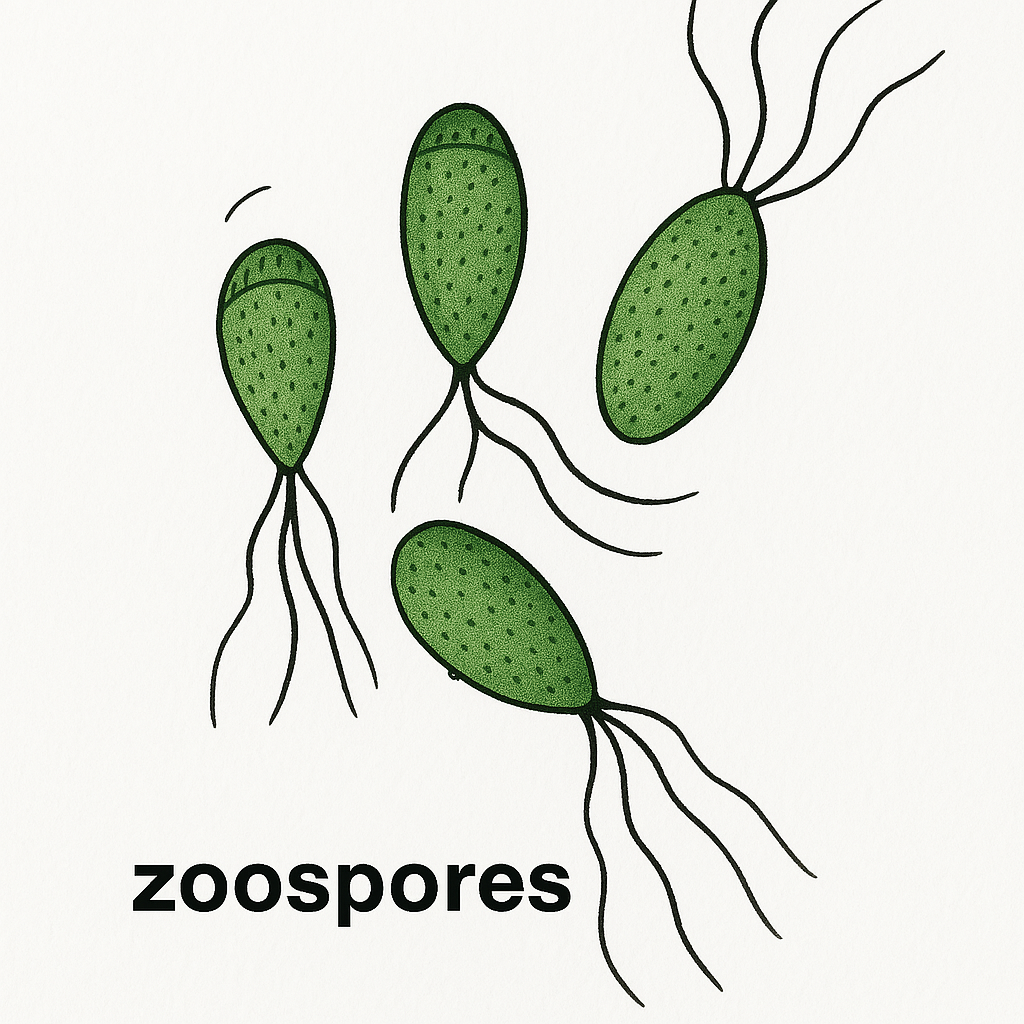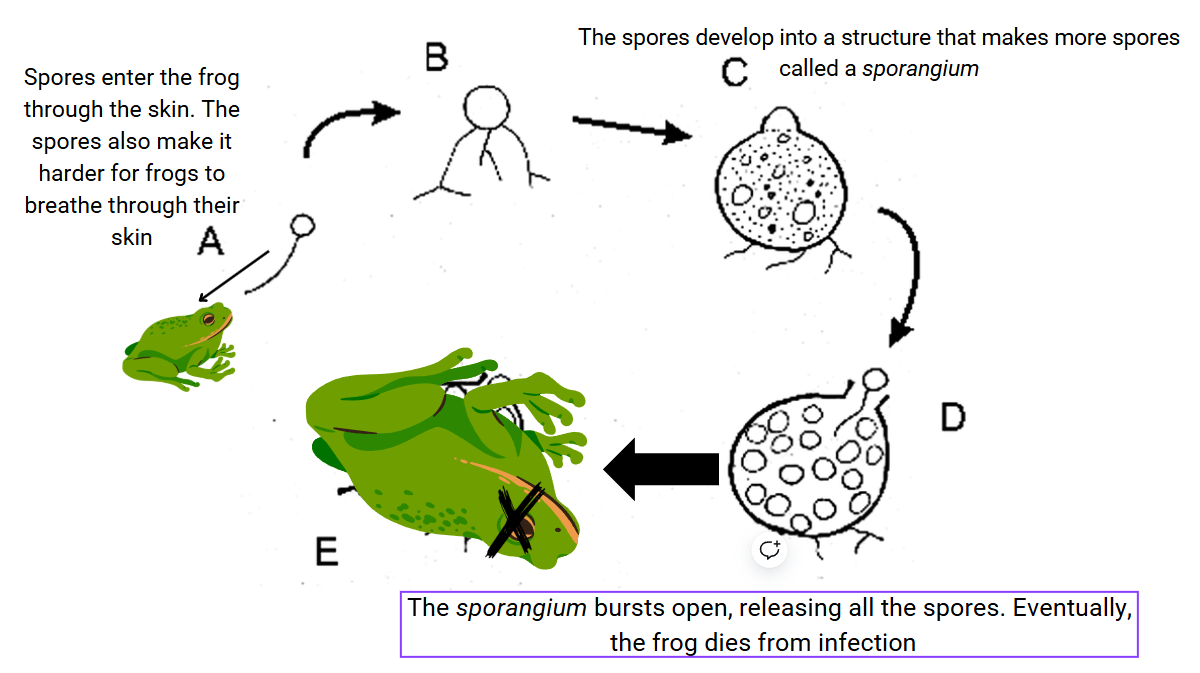How are amphibians dying so quickly?
The discovery of a new fungus
In 1998, researchers found that amphibians in the rainforests of Panama and Australia have been dying out at an alarming rate, causing massive population loss. In order to see what's happening to these populations, researchers studied the dead amphibians and found that the main culprit for the deaths of these amphibians was a fungus called Batrachochytrium dendrobatidis (Bd), otherwise known as chytrid fungus (Berger et al., 1998). These guys are responsible for the extinction of amphibians worldwide, resulting in massive losses of biodiversity.
What is Bd?
Bd or chytrid fungus is a tiny fungus that lives in water and makes a type of spore known as a zoospore to infect amphibians. These zoospores have little tails known as flagella that allow them to move around in water. They thrive in cool, moist environments which is why they're so common in rainforests where amphibians live.
It is likely that Bd was introduced to amphibians through changes in the environment due to humans that were contaminated with chytrid fungus capturing amphibians to trade with others. Climate change may have also played a part in the spread of chytrid fungus because different environmental conditions could have allowed the fungus to thrive in areas it normally would not have.

The Spread of Bd

The cycle of infection
The fungus starts its infection when zoospores enter the amphibian through their skin. They enter the animal either by coming into direct contact with one, or from an amphibian breathing in water containing zoospores. While inside the amphibian, the zoospores grow and develop into a round structure that produces more spores called a zoosporangium. These zoosporangium also make tubes that connect to the amphibian's skin. Once the zoosporangium is all grown up, they release their spores through the tubes out of the amphibian's skin so they can infect more amphibians and the cycle continues. Eventually, the frog dies from the lasting effects chytrid fungus has on its body.
Chytrid fungus is so deadly to amphibians because the spores infect the outer layer of their skin. These spores cause the amphibian's skin to shed and harden. Because this layer is used by amphibians to breathe, the consequences of this infection are vast as amphibians can experience:
- Difficulty breathing
- Loss of coordination
- Inability to maintain proper water balance
- Loss of essential nutrients like sodium (Na+) and potassium (K+) which are essential for muscle and heart function
- Difficulty moving
- Heart failure and death
- Of the 2,525 amphibian species sampled for Bd, 55% of them were infected with chytrid fungus (Zipkin & DiRenzo, 2022)
- 27% of harlequin toads in Latin America face extinction due to this infection (Kilpatrick et al., 2010)
Understanding how Bd works is crucial for developing strategies to protect amphibian populations and prevent further species losses. This fungus not only threatens the lives of millions of amphibians, it also threatens the ecosystems we live in!